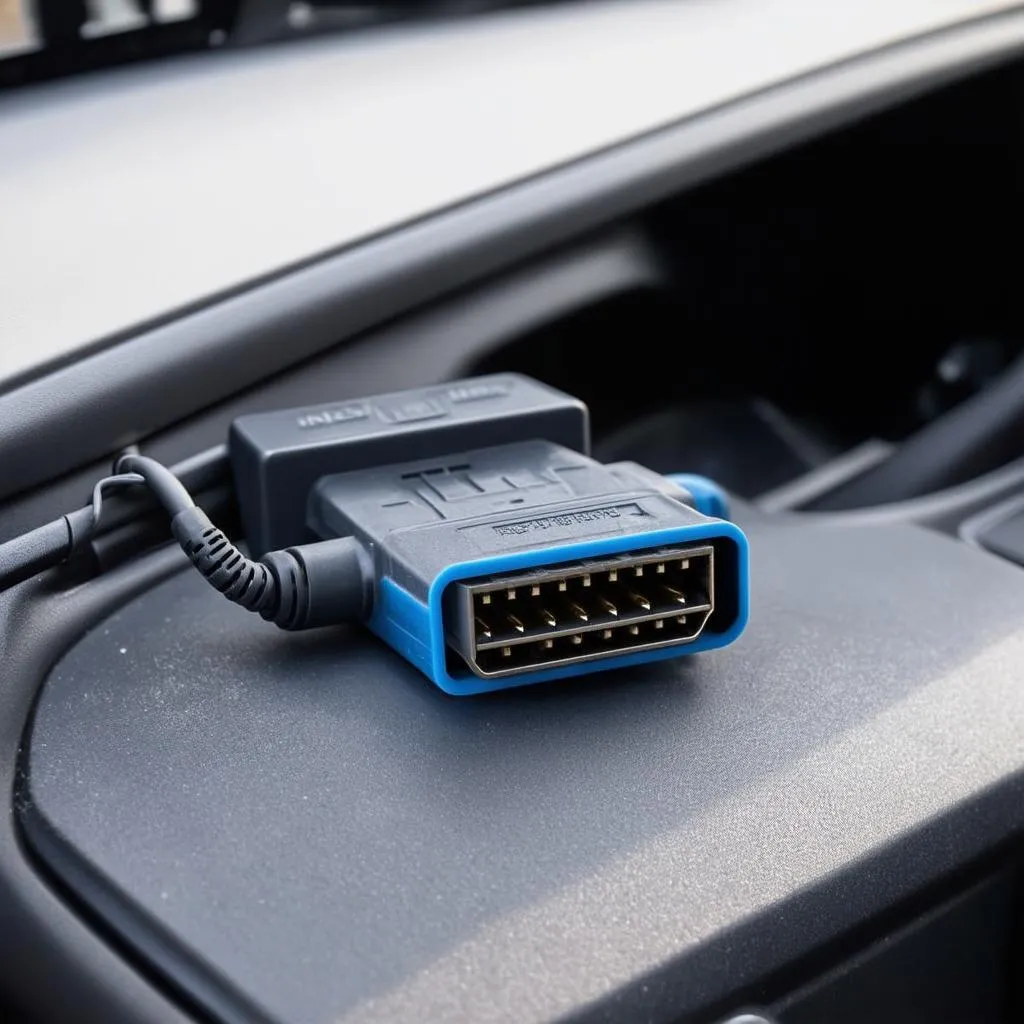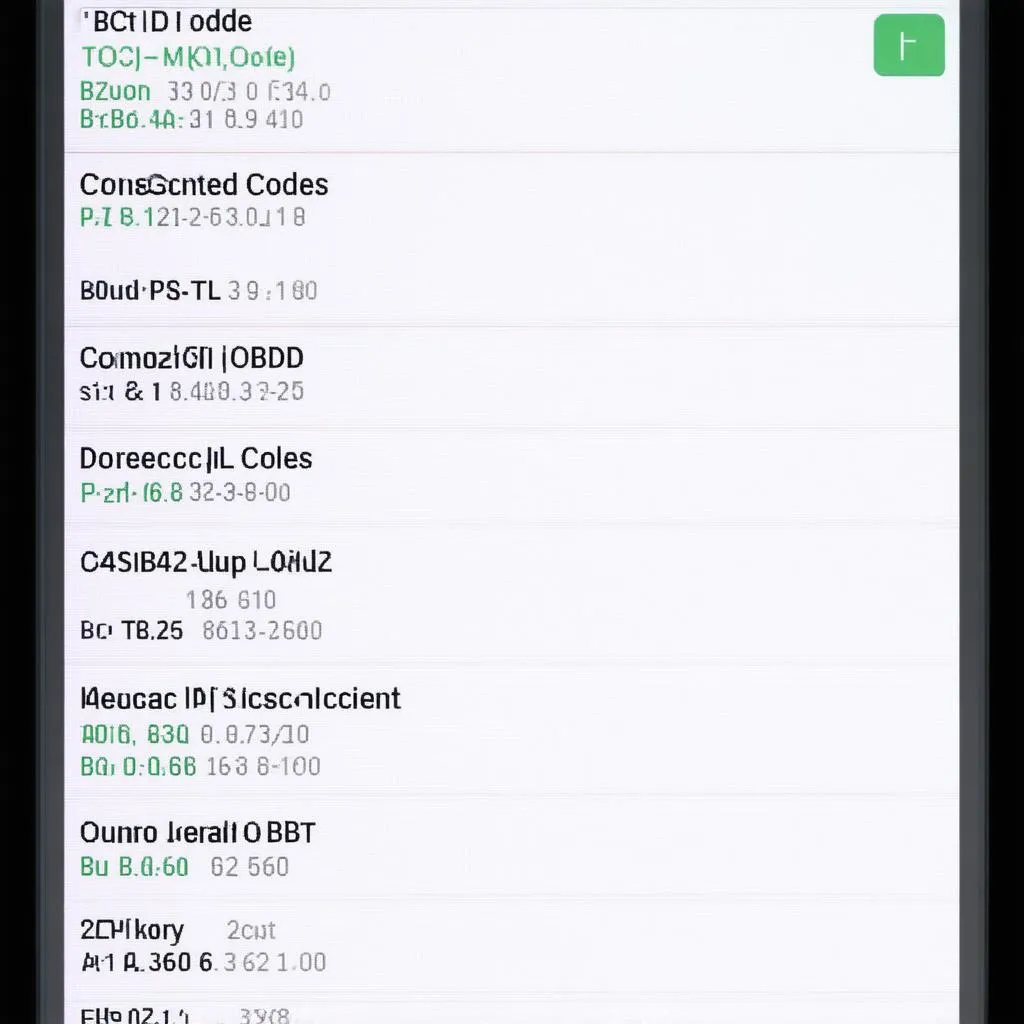“What do you mean, my car has a ‘check engine’ light on? And what’s an ‘OBD-II code’?”
We’ve all been there. That dreaded check engine light flashes on, sending shivers down our spines. Suddenly, we’re faced with a cryptic world of codes and technical jargon. But fear not, intrepid reader! Today, we’ll unlock the secrets of Obd-ii Diagnostic Trouble Codes and empower you to decipher your car’s whispers.
Understanding the Significance of Obd-ii Diagnostic Trouble Codes
OBD-II, short for On-Board Diagnostics II, is a standardized system that monitors your car’s emissions and performance. It’s like a silent guardian, diligently watching over your engine’s health. When something isn’t quite right, OBD-II sends out a signal – a diagnostic trouble code (DTC) – to alert you.
From a mechanic’s perspective, OBD-II codes are invaluable tools. They offer a precise roadmap, guiding them to the root cause of the problem. For car owners, understanding these codes can be the difference between a quick fix and a stressful repair bill.
Imagine a world where your car could tell you exactly what was wrong, instead of just flashing a light. With OBD-II codes, that dream becomes a reality.
Consider this: Imagine you’re driving on a long road trip. Your car suddenly starts sputtering, and the check engine light illuminates. You pull over, feeling a knot of anxiety in your stomach. You pull out your smartphone and check the OBD-II code. It reads “P0171: System Too Lean (Bank 1)”. Now, you know precisely what the issue is – a fuel-related problem. You can call a mechanic, confidently explain the situation, and potentially avoid a long wait for a diagnosis.
Deciphering the Code: What OBD-II Codes Mean
OBD-II codes are like cryptic messages, but with a little guidance, you can decipher their meaning. Here’s a breakdown:
- “P” usually indicates a powertrain-related code (engine, transmission, etc.).
- “C” stands for chassis-related codes (ABS, traction control, etc.).
- “B” signifies a body-related code (airbags, windows, etc.).
- “U” represents network-related codes.
The remaining digits tell you the specific problem. For instance, “P0171” indicates a lean fuel mixture in bank 1 of the engine.
Some common OBD-II codes you might encounter:
- P0300: Random/Multiple Cylinder Misfire Detected
- P0174: System Too Lean (Bank 2)
- P0420: Catalyst System Efficiency Below Threshold (Bank 1)
- P0123: Throttle Position Sensor/Switch “A” Circuit High Input
The Internet is your friend! There are numerous websites and apps dedicated to decoding OBD-II codes. Just search for the code you’re facing, and you’ll find a comprehensive explanation.
Some key terms to remember:
- Freeze Frame Data: This captures the conditions of your car at the moment the code was triggered.
- Generic Codes: These apply to most vehicles.
- Manufacturer-Specific Codes: These are unique to certain car brands.
Note: While deciphering codes can be helpful, it’s essential to seek professional help when dealing with complex automotive issues.
OBD-II: A Bridge Between Your Car and You
OBD-II codes are a gateway to understanding your car’s inner workings. It’s like learning your car’s secret language, empowering you to proactively address potential problems before they escalate.
Frequently Asked Questions
Q: Do all cars have OBD-II?
A: Most cars manufactured after 1996 are equipped with OBD-II.
Q: How can I access OBD-II codes?
A: You can use a dedicated OBD-II scanner, a smartphone app with a Bluetooth adapter, or even your car’s built-in diagnostics system (if available).
Q: What should I do if I get a code?
A: First, try to understand the code’s meaning. If the issue is minor, you might be able to address it yourself. However, for more complex problems, it’s best to seek professional help.
Q: Can I clear the code myself?
A: You can often clear the code using a scanner or app, but this doesn’t fix the underlying problem. The code might reappear unless the issue is resolved.
Q: Are there any tools for reading OBD-II codes?
A: Yes, there are numerous tools available, including:
- OBD-II Scanners: These are specialized devices that connect to your car’s diagnostic port.
- Smartphone Apps: Several apps, like Torque Pro and OBD Fusion, can read OBD-II codes when used with a Bluetooth adapter.
Q: Can I use OBD-II codes to improve my car’s performance?
A: While OBD-II can help you diagnose problems, it can’t enhance performance without modifications to your car’s systems.
Embrace the Power of Knowledge
OBD-II codes may seem intimidating at first, but with a little investigation, they can become powerful tools for understanding your car. Remember, knowledge is your best weapon against unexpected automotive troubles.
 obd-ii-scanner
obd-ii-scanner
Enhance Your Car’s Feng Shui
While not directly related to OBD-II codes, feng shui principles can play a role in creating a harmonious environment for your car. A clean, organized interior, along with positive affirmations, can enhance your driving experience.
Connect With Our Experts
At TechCarUSA, we’re passionate about helping you understand your car. If you have any questions about OBD-II codes or need expert assistance with your vehicle’s diagnostics, feel free to contact our team on Whatsapp: +84767531508.
We’re available 24/7 to assist you.
Stay Connected
For more information about OBD-II codes, car maintenance tips, and other valuable insights, check out these articles on TechCarUSA:
- Does a 2007 Lincoln Town Car Have OBD-II?
- A Freeze Frame is Generated on an OBD-II Vehicle ____
- OBD-I Ford
- P0713 OBD-II
- Bosch OBD-II Codes
Don’t forget to leave a comment below and share your thoughts on OBD-II codes!
 obd-ii-code-list
obd-ii-code-list